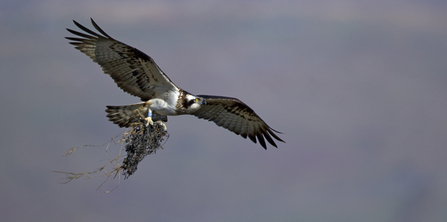Montgomeryshire Wildlife Trust are honoured this week. This website is exactly two years old this month and to celebrate, we have for the first time, a guest writer.
This blog is written by none other than Paul Wildlifewriter.
~~~~~~~~~~
Glesni was last seen at Cors Dyfi on 31st August just after 08:00 BST. This is the final nest camera image recorded of her for this season.




